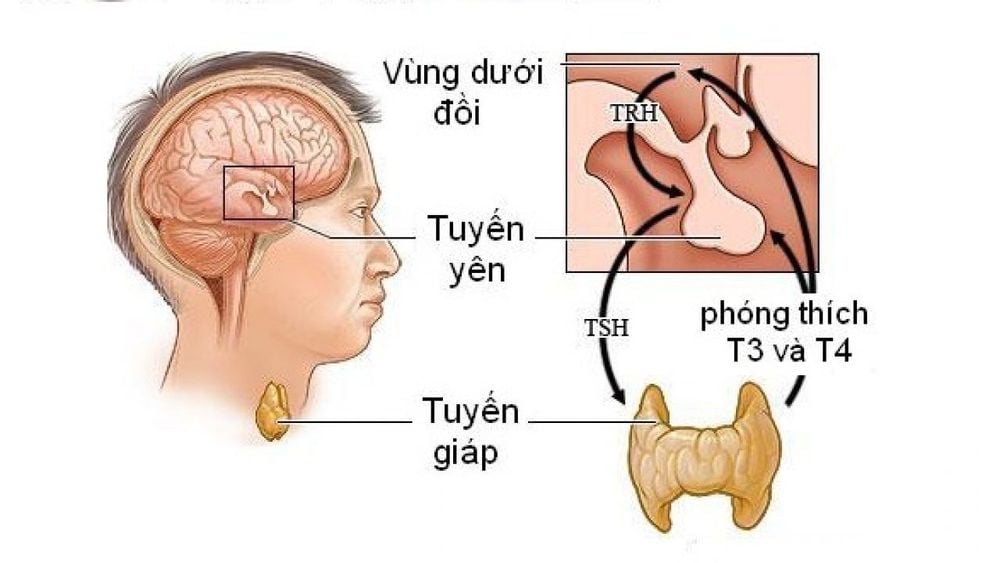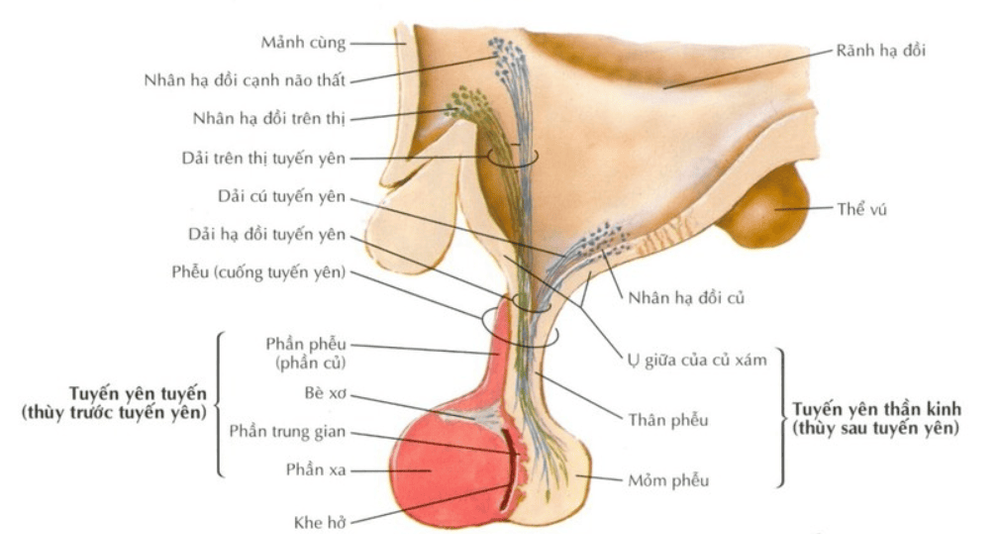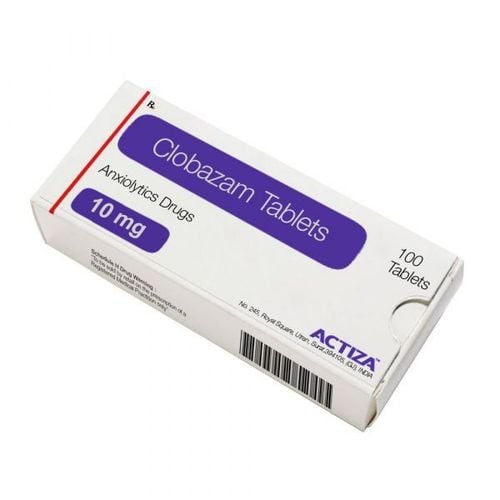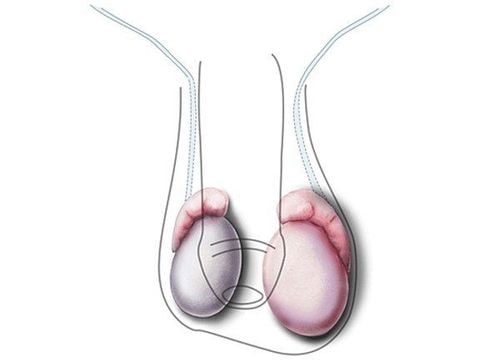This is an automatically translated article.
The hypothalamus is one of the extremely important parts of the body, it connects the endocrine system with the nervous system and does the main job of combining with the pituitary gland to be able to start or stop production. hormone production.
1. What is the hypothalamus?
The hypothalamus is the part of the brain that contains several small nuclei with various functions. One of the most important functions of the hypothalamus is to link the nervous system with the endocrine system through the pituitary gland. The hypothalamus is located below the thalamus and is part of the limbic system. In neurosurgery terms, it forms the ventral part of the medial brainstem. All vertebrate brains contain the hypothalamus. In humans, it is about the size of an almond.
The hypothalamus is responsible for regulating certain metabolic processes and other activities of the autonomic nervous system. It synthesizes and secretes certain types of neurons known as hypothalamic or hormone-releasing hormone. The hypothalamus in turn stimulates or inhibits hormone secretion from the pituitary gland. Plus, it controls body temperature, hunger, thirst, fatigue, sleep, and circadian rhythms.

Vùng dưới đồi có vai trò quan trọng trong hệ nội tiết
2. The role of the hypothalamus in the endocrine system
The hypothalamus controls almost every life process. Several important roles of the hypothalamus in the endocrine system:
2.1. Release hormone
Release the endocrine glands in the human head and neck. The hypothalamus has central nervous system function and, most notably, the control function of the anterior pituitary gland. From there, regulate various endocrine glands and organs. Released hormones (called releasing factors) produced in the hypothalamic nuclei are then transported along axons to the medial or posterior pituitary. Where they are stored and released as needed.
2.2. Anterior pituitary
In the hypothalamic-anterior pituitary axis the pituitary gland releases hormones called hypothalamic hormones. Hormones are released from hypothalamic elongation into the portal system of hypothalamic hormones. These hypothalamic hormones are stimulated by neurons located in the periventricular area of the hypothalamus. Once released into the capillaries of the third ventricle, hypothalamic hormones pass through the hypothalamic-pituitary portal circulation system. When they reach their anterior pituitary destination, these hormones bind to receptors located on the surface of pituitary cells. And depending on which cells are stimulated through this link, the pituitary gland will either start or stop secreting the remaining hormone into the bloodstream.

Giải phẫu thùy trước tuyến yên
2.3. Posterior pituitary
In the hypothalamic-autonomic axis, autonomic hormones are released from the posterior pituitary, which is an extension of the hypothalamus into the circulation. Hormones of the hypothalamus-pituitary-adrenal region (HPA) are implicated in a number of skin diseases and homeostasis. There is evidence that this is associated with hyperactivity of the hormone HPA with stress-related skin diseases and skin tumors.
2.4. Stimulation
The hypothalamus coordinates many hormonal circadian rhythms, complex patterns of neural output, complex homeostatic mechanisms. Therefore, the hypothalamus must respond to a variety of signals. Signals are generated from the inside and some signals are generated from the outside as well. Delta wave signals arising in the cerebral cortex influence the secretion of growth hormones (GHRH), prolactin is stimulated while TRH is inhibited.
2.5. Controlling food intake
The extreme lateral part of the ventral tegmental area of the hypothalamus is responsible for controlling food intake. Stimulating this area increases food intake. Bilateral damage of this region will cause a complete cessation of food intake. The medial parts of the nucleus have lateral control. Bilateral damage to the medial portion of the ventral tegmental area induces hypertrophy and obesity in animals. Further damage of the lateral part of the ventricular nucleus in the same animal produced a complete cessation of food intake.

Vùng dưới đồi trong hệ thống nội tiết giúp kiểm soát lượng thức ăn
2.6. Autonomic Control
The most important function of the hypothalamus is to integrate the endocrine system and the autonomic nervous system. The area of the brain that controls body temperature, hunger... acts as a higher center to control autonomic functions of the brain stem and spinal cord. Stimulation of the dorsal and lateral nuclei of the hypothalamus has been shown to induce a sympathetic response. On the other hand, the stimulation of the anterior nucleus pulposus and the presynaptic region influences sympathetic responses in the body.
References: webmd.com, human-memory.net, en.wikipedia.org
MORE
Consequences of hypopituitarism Hypopituitarism: Causes, symptoms, diagnosis and treatment Prolactin hormone what?













